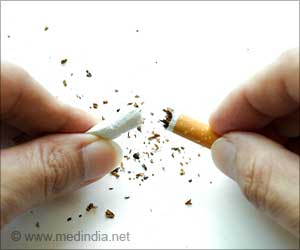Sustained release of naltrexone from implant is effective in treating heroin addiction, say Australian researchers.
Impant for sustained release of naltrexone is effective in treating heroin addiction, say Australian researchers.
Naltrexone blocks the parts of the brain that “feels” the pleasure when using alcohol or narcotics. When these areas of the brain are blocked, the craving also comes down. Administering naltrexone through an implant also means one can’t skip a dose.The implant provides an extended therapeutic period during which heroin addicts can alter their lifestyle, said lead author, Winthrop Professor Gary K. Hulse, Professor of Addiction Medicine, School of Psychiatry and Clinical Neurosciences, at The University of Western Australia. "It gives you a window of opportunity of about six months to effect some level of change," said Professor Hulse. "It allows people to move away from the narcotic network." The study appeared in the prestigious international Journal Archives of General Psychiatry (66, 10 2009).
The study found that the implant containing sustained-release naltrexone, was superior to daily oral naltrexone (the formulation currently approved by the Commonwealth Therapeutic Drugs Administration) in reducing relapse to regular heroin use among previously heroin dependent patients, according to the first randomised, placebo controlled study of this drug formulation.
The study included 70 heroin-dependent people aged 18 years and older. They were randomised to receive either the daily tablet plus a placebo implant or daily placebo tablets plus a naltrexone implant inserted subcutaneously in the abdominal under local anesthesia. "We effectively gave people both an implant and an oral formulation where one was active and no one knew which formulation was given," said Professor Hulse.
All participants underwent a day-long detoxification. As well, to minimise the adverse effects of opiate withdrawal, participants were advised not to use opiates on the day of the procedure and to reduce consumption during the preceding days. Participants were also encouraged to attend weekly individual, group, or family therapy during the study.
During the six month follow-up period, only 17 per cent participants in the implant group (6) were classified as returning to regular heroin use, with 63 per cent (22) reported complete abstinence. The comparable figures for the oral group were: 62 per cent (21) returning to regular heroin use, and 26 per cent (9) reporting complete abstinence. Return to regular heroin use also occurred significantly earlier among participants in the oral group compared with the implant group (a median of 115 days compared to 158 days).
Advertisement
Source-Medindia
GPL









